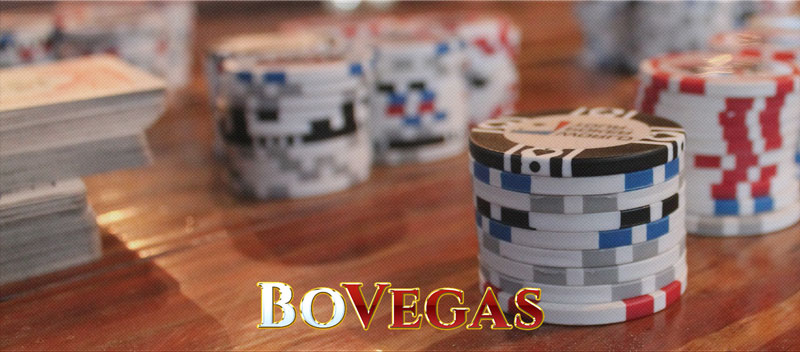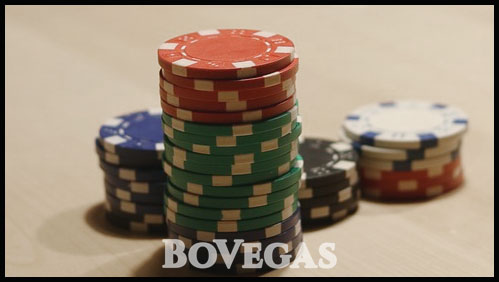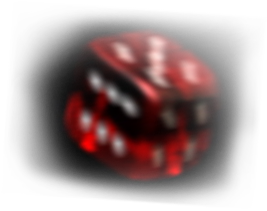



As we’ve already mentioned, you want your bets to have a purpose and to tell a story that gets your opponents to act the way you want them to act. But the question is: How do we accomplish this?
Before we can reach our goal, we have to identify what it is. With wagering strategies, there are only a few specific outcomes that we’re aiming to. We want our opponents to either raise, call or fold.
Let’s say, everyone has $1,500 in chips, and the blinds are 15 and 30. We made a late position raise with the Queen of Spades, Jack of Clubs: Queen Jack offsuit and the big blind calls us bringing a flop of Queen of Hearts, Jack of Hearts, Four of Clubs. Yes, that’s top two alright! But even though we hit top two pairs here, this is still kind of a scary board, as our opponent could easily draw a straight or a flush! So what we want here is to end a hand right now. I.e., by them moving all in, which means we want them to fold. Or do we? The first thing to determine is what kind of player we’re facing? Is he loose or is he tight? Since the loose opponent is more likely to chase his draw than a tight opponent, we’re gonna have to bet more in order to give him wrong odds to call.
Because our opponent is only likely to hit his draw about ⅓ of the time, this means that betting about ½ of the pot should be enough to get a tight opponent to fold in the spot. Think about it: there’s $200 in the pot, you bet half a pot, that’s $100. Now for him to call he’s getting laid three to one. You have a chance scare him off. He’s getting the exact perfect odds to call. A tight player might fold, and a loose player might call.
Against a loose opponent though, this bet is probably too small. Which means, we may have to make a full pot bet or even overbet the pot in order to provoke a fold. In some cases, where our stack is relatively short compared to the pot, overbetting may mean moving all in here. While this can be effective, be sure the reward of winning the hand is worthy of risking to lose your stack before you make this play.

Finally, let’s talk about defensive betting, where our goal is to make our opponent either call or fold, thus preventing him from either betting or raising. Which benefits does this strategy bring? By and large, we’re making this kind of bets when we have a draw, but we haven’t yet made our hand. Let’s assume that we’ve loosened up, and we’ve played Seven Eight of Spades in the middle position. The button calls on us, and now we’re looking at the King of Spades, Ten of Spades, Five of Clubs. We have nothing here but a flush draw. It’s okay to check here, but it isn’t the optimal strategy, because we’re forfeiting some potential value if we hit. Except for that, we’re giving an opponent the opportunity to make a bet that might force us to fold. We believe that the best move is to bet here since you have about 60% chance to grab the pot.
Defensive betting is a trick allowing us to find a number big enough to make our opponent either call or fold. This strategy also allows us to keep the bet relatively cheap so that our draw doesn’t cost us more than we can afford. Oftentimes, a bet around one-third of the pot is exactly enough to do it!
If, for a novice player, betting is merely a measure of how much money you’re going to win or to lose, then for a pro, wagering is the way to make other players do what he or she wants. You should watch your opponents and remember whether they’re loose or tight, whether they tend to fold in shaky situations, or prefer betting no matter what. You can use the betting strategy to make other players play your game and not vice versa, and if you succeed with it often – you really are a great player!

On May 14, the AGA (American Gaming Association) finally announced its long-expected Responsible Marketing Code. It is aimed at regulating the Association’s activities in advertising sports betting. In many ways, this is a remarkable event. It was well-timed to coincide with the 1st anniversary of the historic decision of the US Supreme Court to lift […]
As far back as records indicate, gambling has been a significant source of entertainment in the world for over 4,000 years, and it has been discussed in many books about Ancient civilizations. During these historic eras, and in the periods that followed, women were considered to have a low stature in society, and in many […]
Riverside casino offers a powerful blend of natural attractions and gambling entertainments which helps to provide a unique tourist experience. The history of luxury cruise ships dates back to the end of the 19th century. Over the years, they have been re-designed and improved, with many of them being transformed into floating casinos. If a […]
Everybody who plays blackjack wants to win – and even those who do not play do at least (sometimes!) dream about winning this game. A search result for “how to win in blackjack” offers about 400k links, and the total number of pages containing the word “blackjack” is about 65 million! So this is a […]
If you love gambling and have been to a land-based casino at least once, you may have thought about becoming a dealer. Playing the same game but from the opposite side, while communicating with other players, sounds like a dream job, right? A dealer is a straightforward job, and you will be the heart and […]
On Monday September 14, MGM announced that it plans to open its first smoke-free casino at the end of September, when Park MGM will finally reopen its venues to players and tourists. The resort comprises around 2,990 rooms and various restaurants, and it’s set to be reopened on September 30. The venue has been closed […]
Online gambling has undoubtedly taken a place of true supremacy over the casino industry during the pandemic. And the reason for that is quite clear: online casinos are more accessible, and you can always count on some encouragement from the casino administration to help you boost your game. However, this digital revolution has only been […]
The large selection of online gambling sites out there can make players somewhat puzzled, and give them a feeling of uncertainty about making the right choice of casino. Each online gambling venue offers its own conditions, games, and various bonuses, of course; but the most important thing is the reliability of the casino and the […]